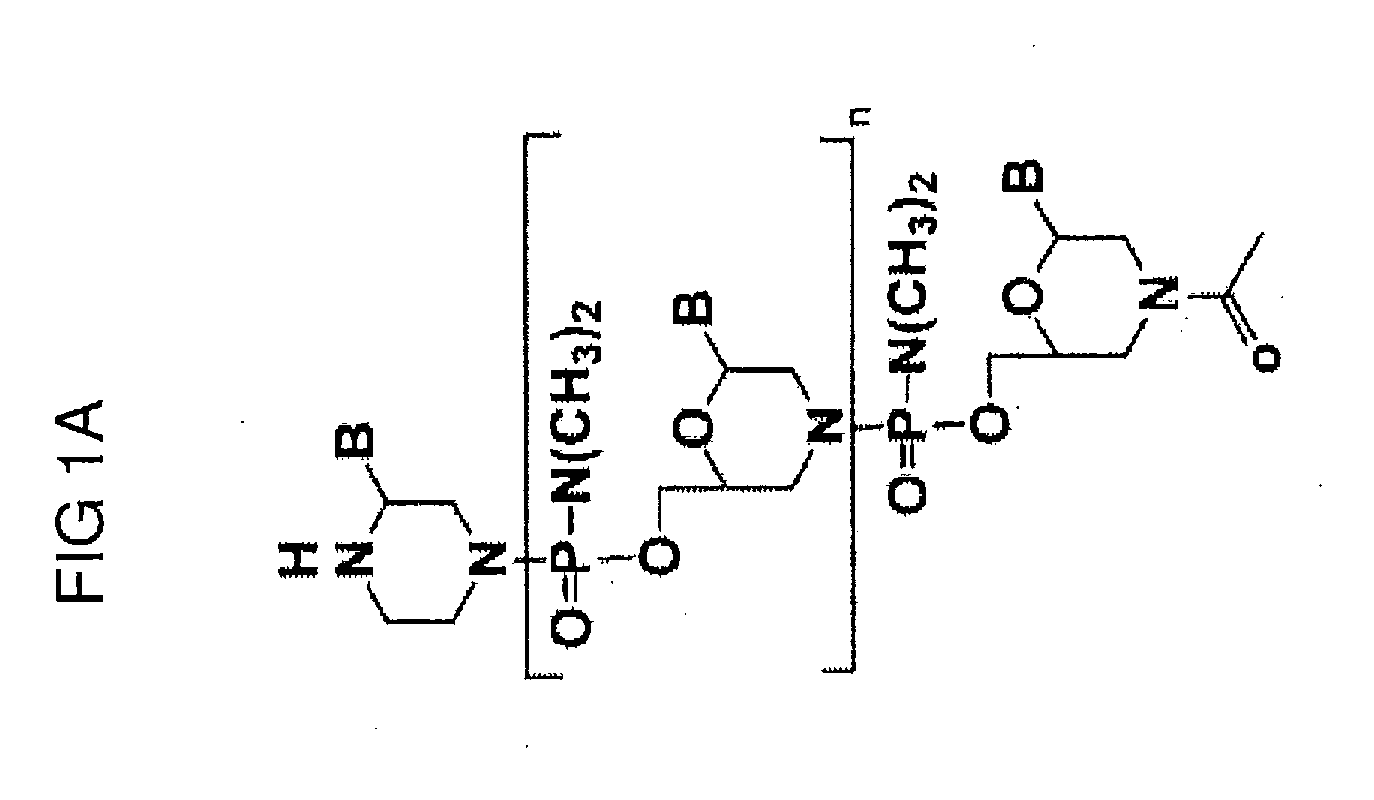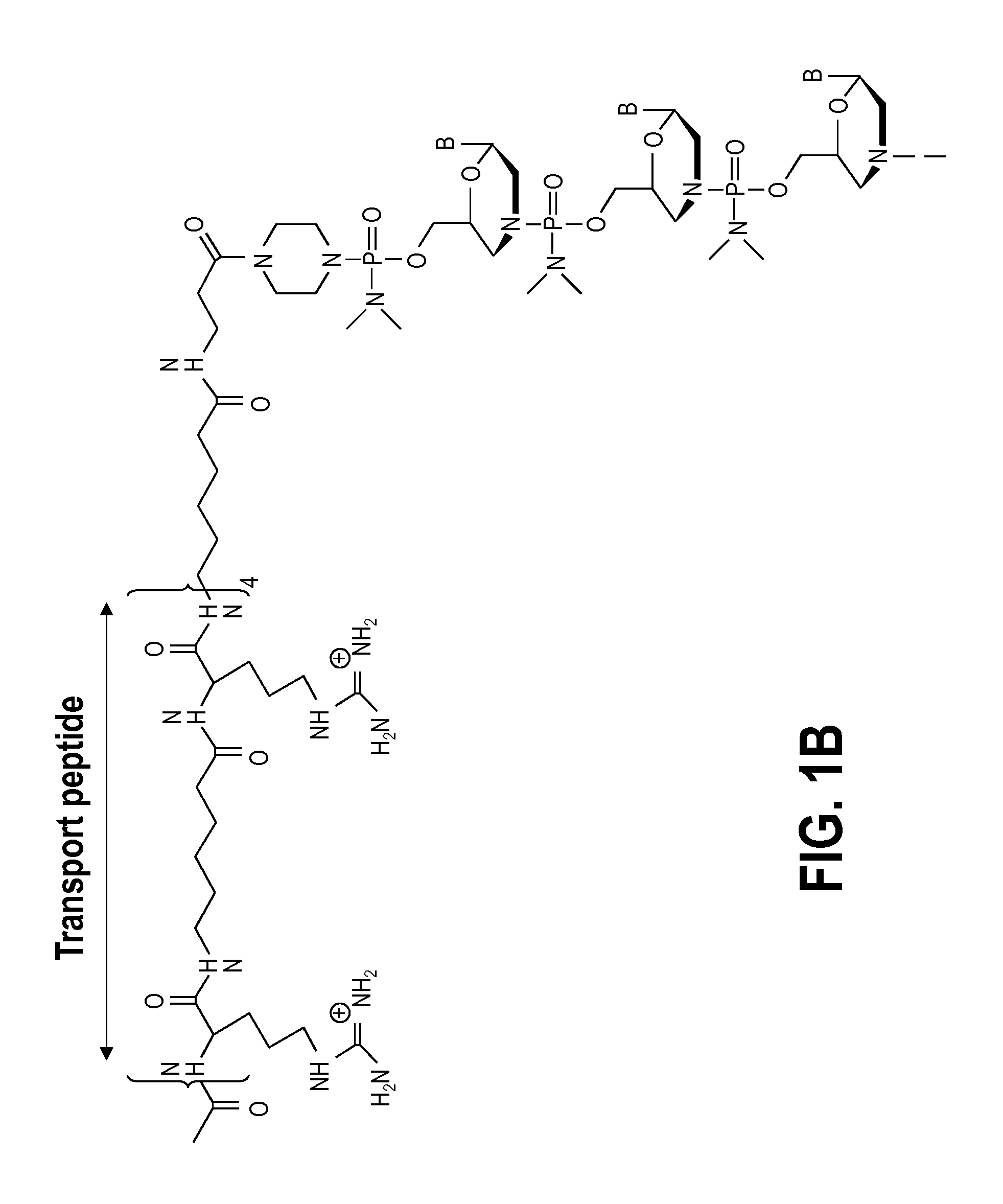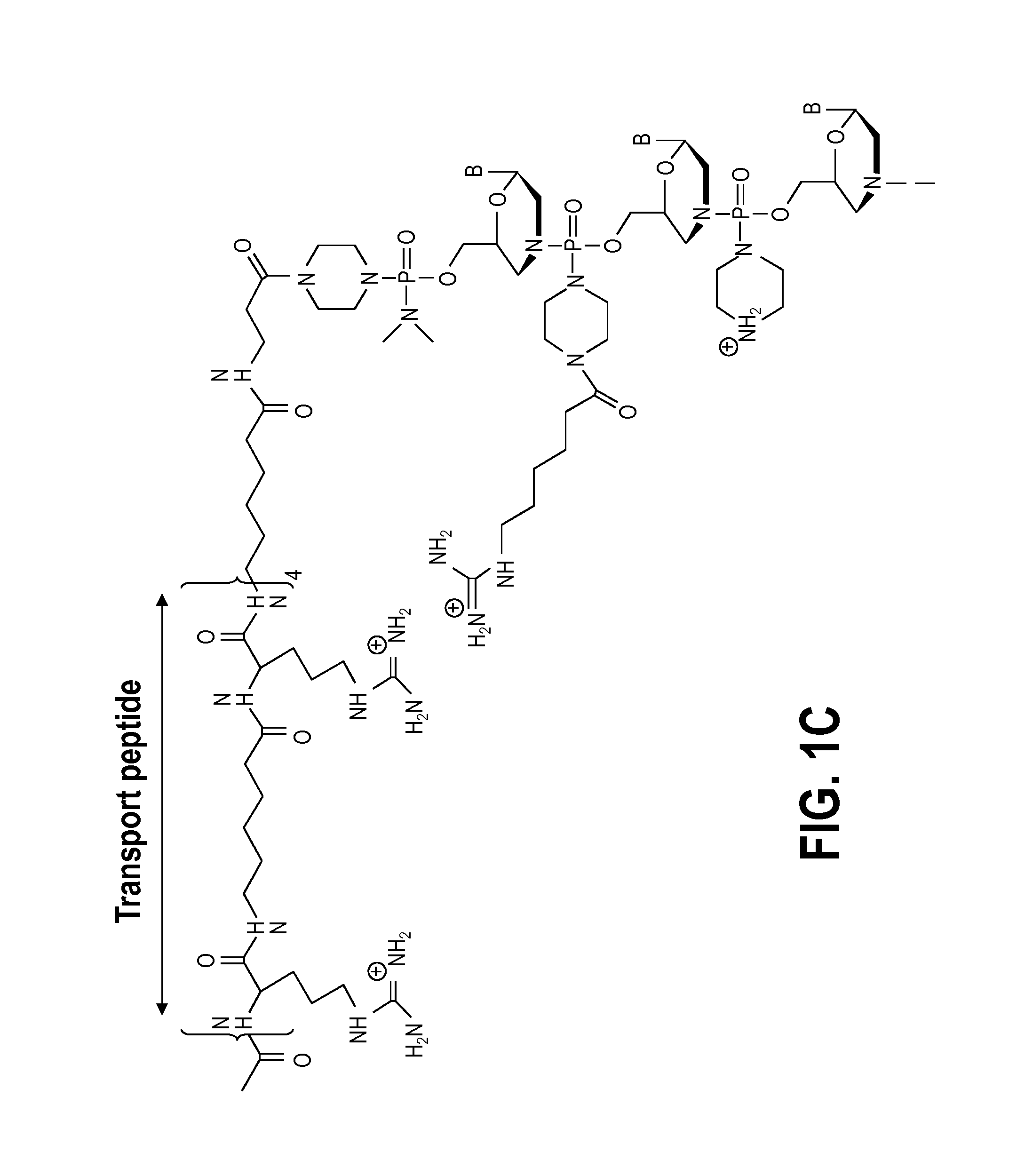Exon skipping compositions for treating muscular dystrophy
a composition and muscular dystrophy technology, applied in the field of new anti-sense compounds, can solve the problems of compound efficiency much less efficient in immortalized cell cultures expressing higher levels of dystrophin, and ineffective techniques, etc., and achieve the effect of enhancing activity, cellular distribution, or cellular uptak
- Summary
- Abstract
- Description
- Claims
- Application Information
AI Technical Summary
Benefits of technology
Problems solved by technology
Method used
Image
Examples
example 1
Exon 53 Skipping
[0241]A series of antisense oligomers that target human dystrophin exon 53 were designed and synthesized as follows:
SEQDescriptionSequenceID NOH53A (+33 +60)GTTGCCTCCGGTTCTGAAGGTGTTCTTG1H53A (+23 +47)CTGAAGGTGTTCTTGTACTTCATCC2H53A (+33 +62)CTGTTGCCTCCGGTTCTGAAGGTGTTCTTG3H53A (+33 +65)CAACTGTTGCCTCCGGTTCTGAAGGTGTTC4TTGH53A (+31 +55)CTCCGGTTCTGAAGGTGTTCTTGTA5H53A (+46 +73)ATTTCATTCAACTGTTGCCTCCGGTTCT6H53A (+22 +46)TGAAGGTGTTCTTGTACTTCATCCC7H53A (+46 +69)CATTCAACTGTTGCCTCCGGTTCT8H53A (+40 +61)TGTTGCCTCCGGTTCTGAAGGT9
[0242]The antisense oligomers above were evaluated for exon skipping efficacy by treating RD cells at the various indicated concentrations. In these experiments, published antisense oligomers corresponding to H53A(+23+47) (U.S. Pat. No. 8,232,384; SEQ ID NO: 2), H53A(+33+62) (U.S. Pat. No. 8,084,601; SEQ ID NO: 3), and H53A(+33+65) (WO2011 / 057350; SEQ ID NO: 4) were used as comparative oligomers. As shown in FIGS. 3 and 4 (two independent experiments), oligom...
PUM
| Property | Measurement | Unit |
|---|---|---|
| Tm | aaaaa | aaaaa |
| diameter | aaaaa | aaaaa |
| diameter | aaaaa | aaaaa |
Abstract
Description
Claims
Application Information
 Login to View More
Login to View More - R&D
- Intellectual Property
- Life Sciences
- Materials
- Tech Scout
- Unparalleled Data Quality
- Higher Quality Content
- 60% Fewer Hallucinations
Browse by: Latest US Patents, China's latest patents, Technical Efficacy Thesaurus, Application Domain, Technology Topic, Popular Technical Reports.
© 2025 PatSnap. All rights reserved.Legal|Privacy policy|Modern Slavery Act Transparency Statement|Sitemap|About US| Contact US: help@patsnap.com



